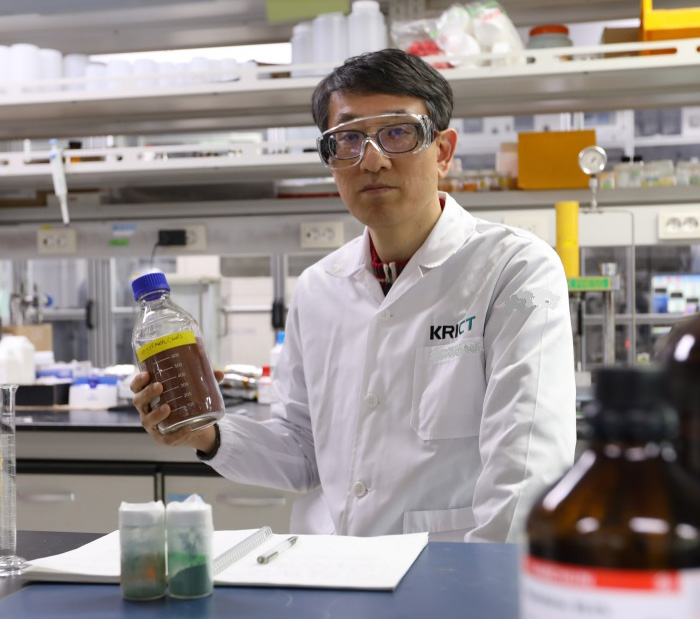Research Stories
Prof. Jong San CHANG Develops a Study on Selective Nitrogen Capture by Porous Hybrid Materials
Prof. Jong San CHANG (dual-appointed professor, Dept. of Chemistry, SKKU and KRICT) and his colleagues have recently published an important article, titled “Selective nitrogen capture by porous hybrid materials containing accessible transition metal ion sites’’ in Nature Materials (doi:10.1038/nmat4825).
Chemistry
Prof.
CHANG, JONGSAN
Prof. Jong San CHANG (dual-appointed professor, Dept. of Chemistry, SKKU and KRICT) and his colleagues have recently published an important article, titled “Selective nitrogen capture by porous hybrid materials containing accessible transition metal ion sites’’ in Nature Materials (doi:10.1038/nmat4825).
It is known that selective dinitrogen binding to transition metal ions mainly covers two strategic domains: the biological nitrogen fixation, catalyzed by metalloenzyme nitrogenases, and the adsorptive purification of natural gas and air. Many transition metal-dinitrogen complexes have been envisaged for biomimetic nitrogen fixation to produce ammonia. Inspired by this concept, Prof. CHANG's group developed the first-ever adsorbent, a mesoporous Metal-Organic Framework (MOF) material containing accessible Cr(III) sites, able to thermodynamically capture N2 over CH4 and O2.
This study resulted from cooperative international research, mainly between the research group for nanocatalysts at KRICT and several groups at the National Center for Scientific Research (CNRS) in France. The study presents a major breakthrough in the domain of the selective capture of nitrogen (here N2 mixed with CH4 and O2) using a porous hybrid solid, called a metal-organic framework (MOF), which contains accessible chromium (III) ion sites. The selective adsorption of N2 is a strategic issue, with the related applications, such as the upgrading of natural gas (for the production of pipelined natural gas (PNG) and compressed natural gas (CNG) as alternative fuels) and the purification of air being amongst the most critical challenges facing the industry today. For the moment, the discovery of a porous adsorbent sufficient for such purposes had not yet been achieved because these solids typically exhibit a better affinity for gases such as CH4 or O2 than N2.
In this context, Prof. CHANG's group has first introduced the utilization of the concept of cationic unsaturated sites (CUS) for generating drastic changes in host-guest interactions (a general problem in materials science), which is useful to induce an unprecedented affinity for N2 with respect to other gases, far above the performances of materials currently used for the target application. The porous adsorbent material that combines a high selective adsorption, large uptake, easy regeneration, excellent recyclability, and good chemical/thermal stability offers a unique opportunity to achieve highly-efficient N2 capture that is difficult to attain using conventional approaches.
From the results, they could identify a clear and striking advance in fundamental understanding or material design. They evidenced the unique property of this solid through a multidisciplinary approach combining state-of-the-art experimental and computational methods. This included structural aspects, infrared spectroscopy, equilibrium and breakthrough adsorption experiments and quantum/force field-based molecular simulations.
Inspired by biomimetic and metal dinitrogen chemistry concepts, this multidisciplinary fundamental study revealed that designing MOFs with unsaturated metal sites into their cages offers a unique opportunity to achieve unprecedented, highly efficient N2 capture.
It is believed that this publication will pave the way towards unprecedented adsorption-based technologies in the fields of energy, environment, medicine and catalysis by pushing the limits of our current knowledge on porous materials chemistry. In addition to this, the manipulation of multifunctional MOFs possessing both selective N2 binding and catalytic sites may propel forward progress in developing future enzymatic catalysts for N2 fixation, which is a dream of chemists, to produce nitrogen-containing chemicals.

